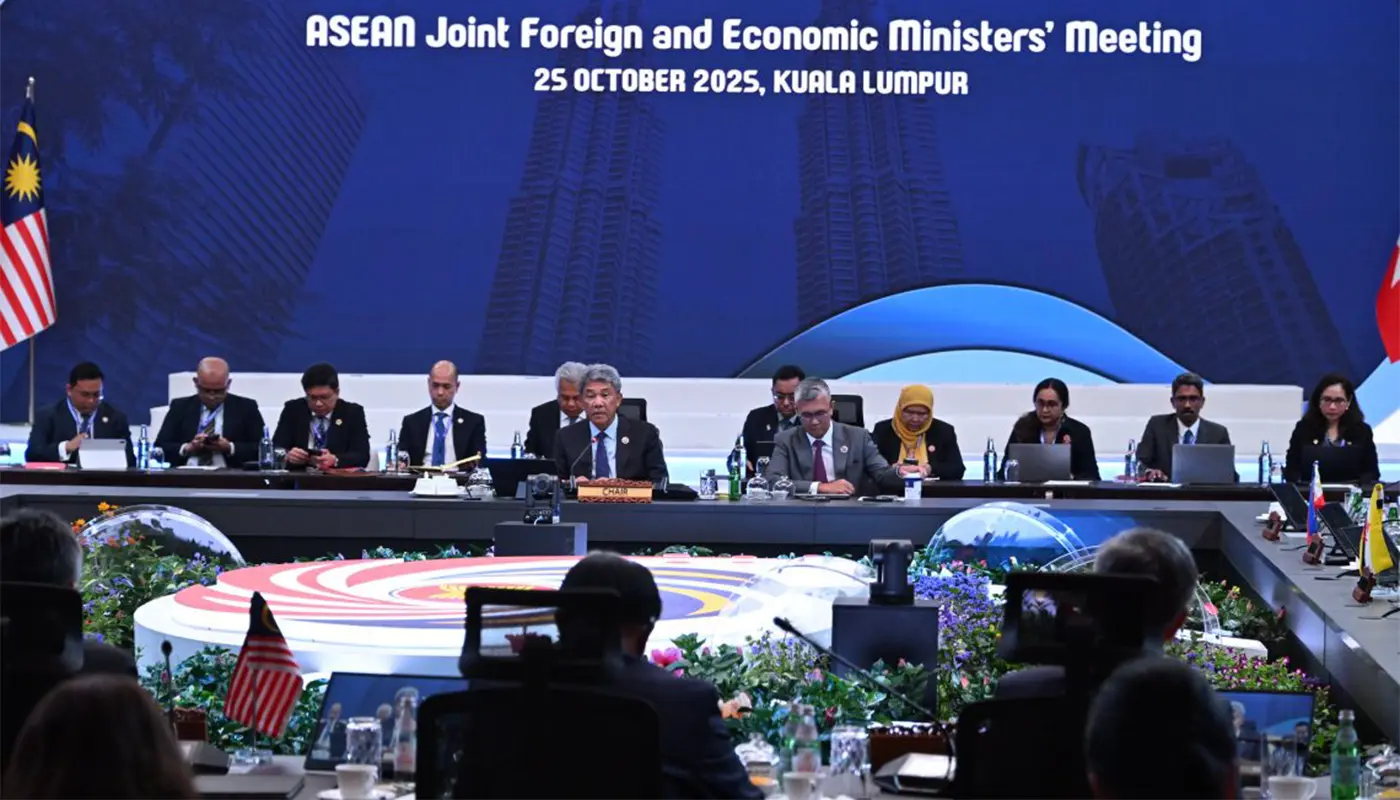KUALA LUMPUR – Ministers from the Association of Southeast Asian Nations (ASEAN) have moved to institutionalise their joint foreign and economic ministerial meeting, in a bid to enhance coherence between political-diplomatic and economic channels within the bloc.
In a Chairman’s Statement released after the ASEAN Joint Foreign and Economic Ministers’ (AMM‑AEM) Meeting held on 25 October 2025, they highlighted the pressing need for stronger alignment in the face of growing geopolitical and geoeconomic complexity.
The meeting was co-chaired by Malaysia’s Foreign Minister Mohamad Hasan and Investment, Trade and Industry Minister Tengku Zafrul Abdul Aziz.
Ministers and senior officials from ASEAN member states, together with the ASEAN Secretariat and experts from the ASEAN Geoeconomic Task Force (AGTF), attended the session, with Timor‑Leste present as an observer.
In the statement, the ministers emphasised that the “current geopolitical and geoeconomic landscape poses unprecedented challenges to the region”.
They urged “greater synergy across the political and economic pillars to respond to the growing economic-security nexus and navigate an increasingly complex and fragmented landscape”.
They also proposed exploring the idea of making the AMM-AEM meeting an annual standing engagement, to be held ahead of the ASEAN Leaders’ Summit, thereby strengthening the alignment of foreign-policy and economic agendas.
On the economic front, the ministers reaffirmed ASEAN’s commitment to a multilateral trading system that is “predictable, transparent, inclusive, free, fair, sustainable and rules-based”, with the World Trade Organization (WTO) at its core.
The statement noted the increased risks arising from protectionism, shifting global power dynamics and overlapping crises.
The statement instructed ASEAN senior officials, in coordination with the Secretariat, to review the AGTF’s recommendations and provide proposals on how to integrate these into the forthcoming ASEAN Economic Community Strategic Plan 2026‑2030 and the ASEAN Community Vision 2045. This alignment is intended to ensure regional policies remain coherent, resilient and inclusive.
The wider context for the move reflects ASEAN’s recognition that economic, security and technological issues are increasingly interlinked.
According to one analysis, the ministers acknowledged that “economics and geopolitics are increasingly intertwined” and that the region must leverage its centrality and unity to maintain stability.
For Malaysia as Chair of ASEAN in 2025, the meeting underlines its ambition to steer the bloc into a more integrated chapter of engagement.
The push for the joint foreign-economic ministerial alignment reflects a regional strategic shift. Malaysia’s Tengku Zafrul stated that the discussions also covered how to boost intra-ASEAN trade and investment, and to deepen cooperation with external partners.
Moving ahead, observers say the proposal to formalise the AMM-AEM as an annual event could signal stronger institutionalisation within ASEAN. Whether member states will commit to the timeline, agenda-setting and deliverables remains to be seen.
Equally, how the AGTF’s recommendations are operationalised, and how trade and economic policies are adjusted to reflect evolving global dynamics, will be critical for the region’s resilience.
In sum, the Chairman’s Statement marks a strategic pivot for ASEAN: from episodic cooperation towards more structured synergy between diplomacy and economics, at a time when the region faces complex external pressures and internal development imperatives.







